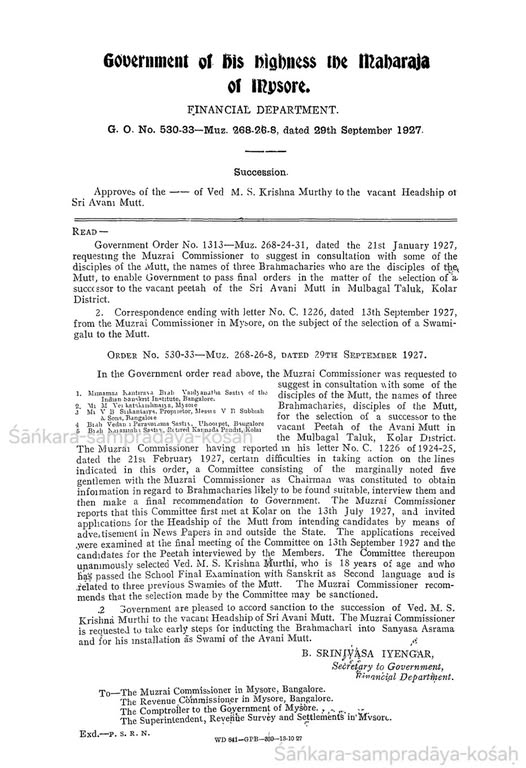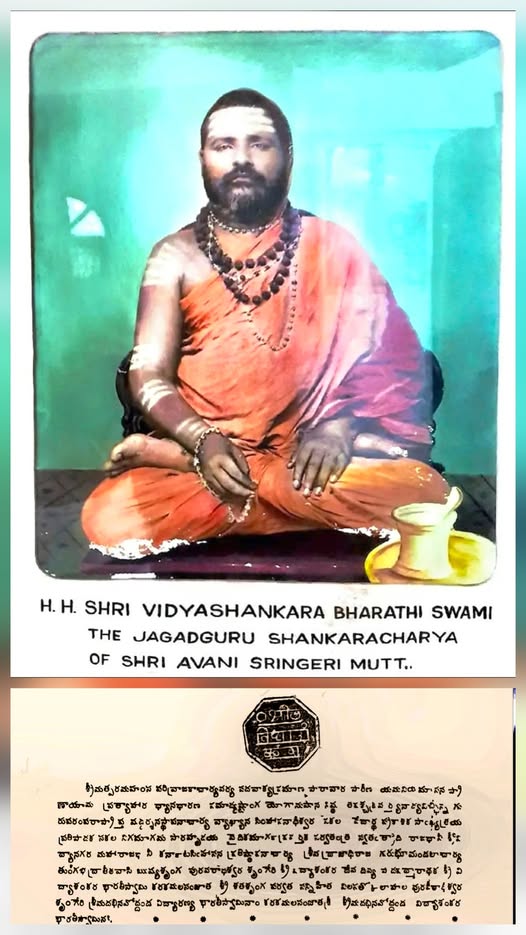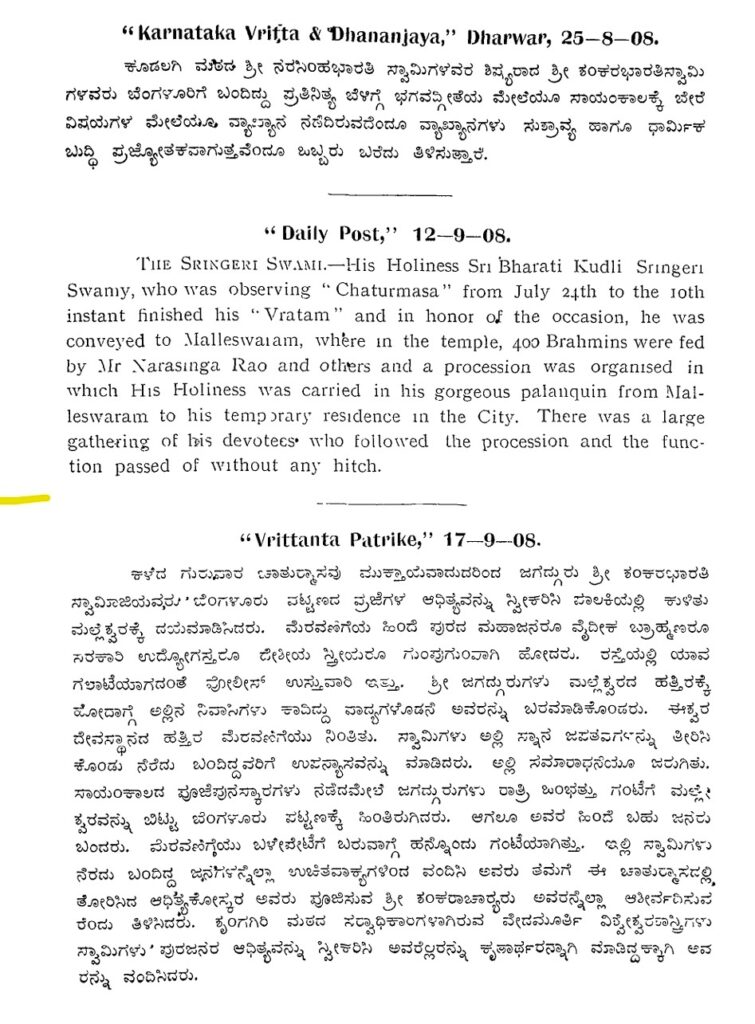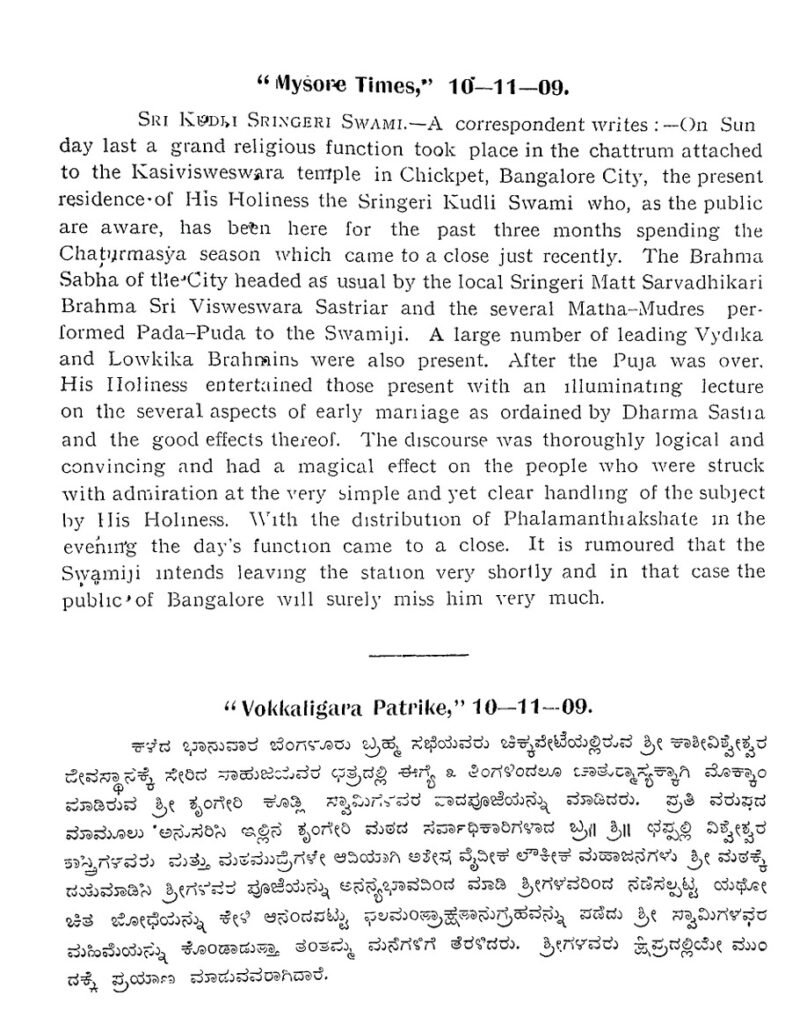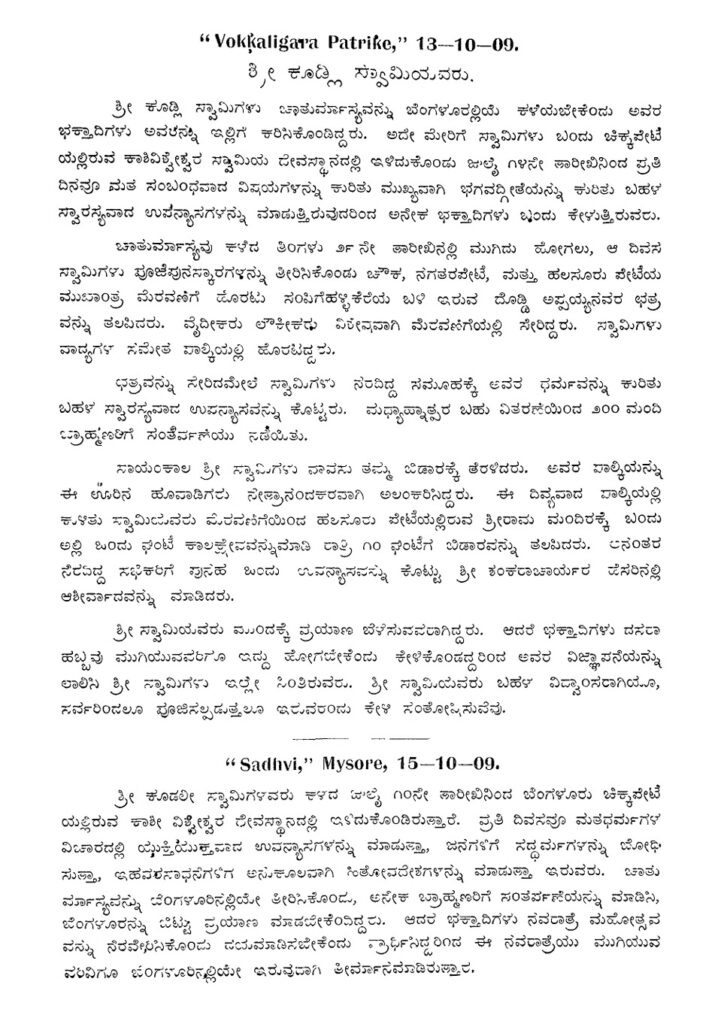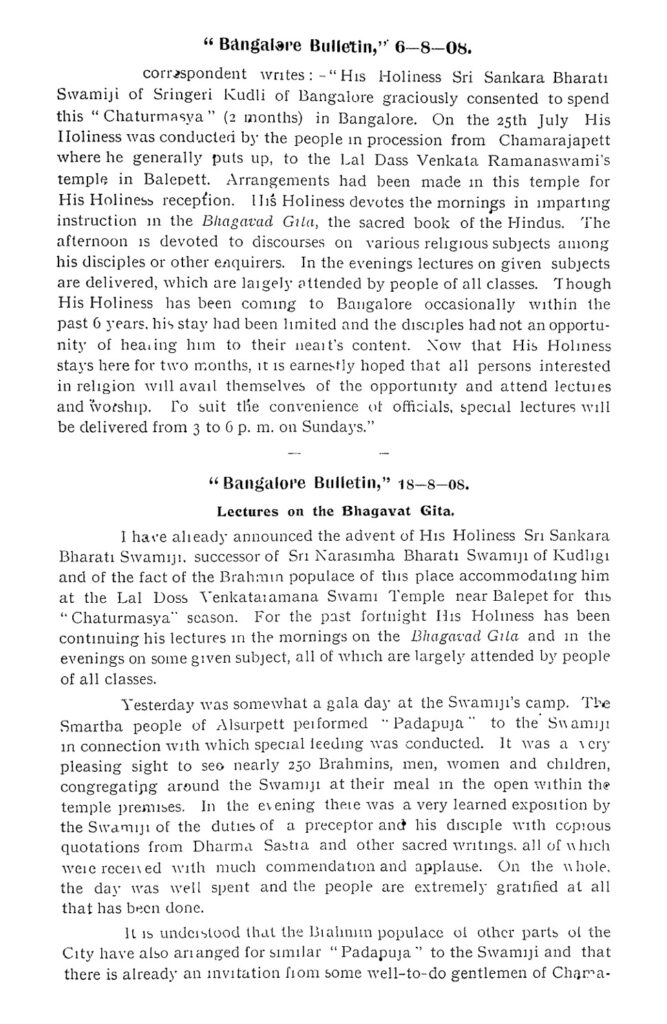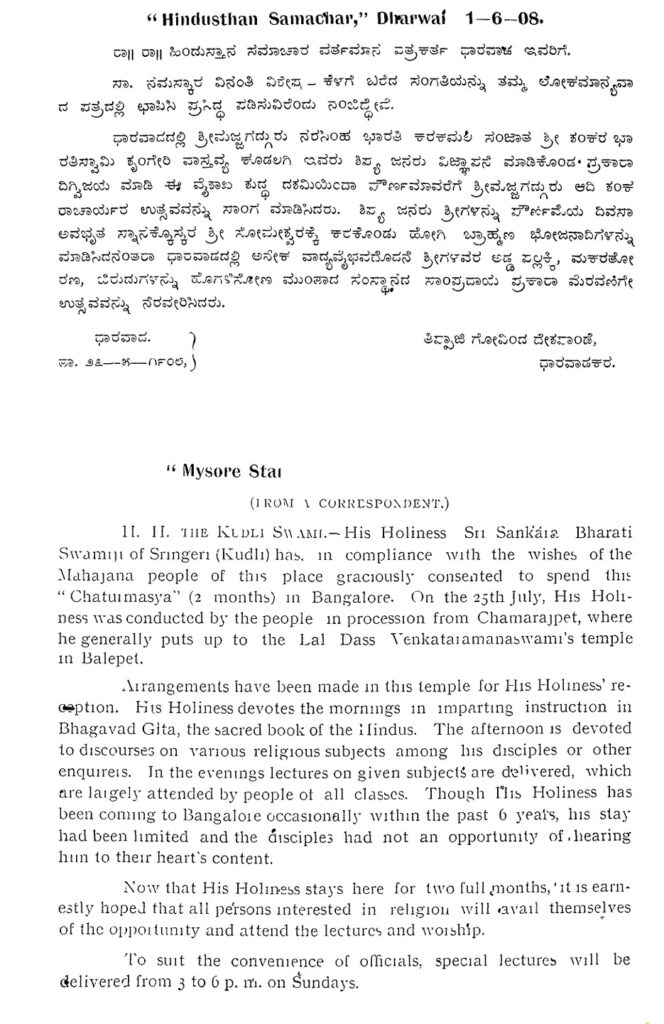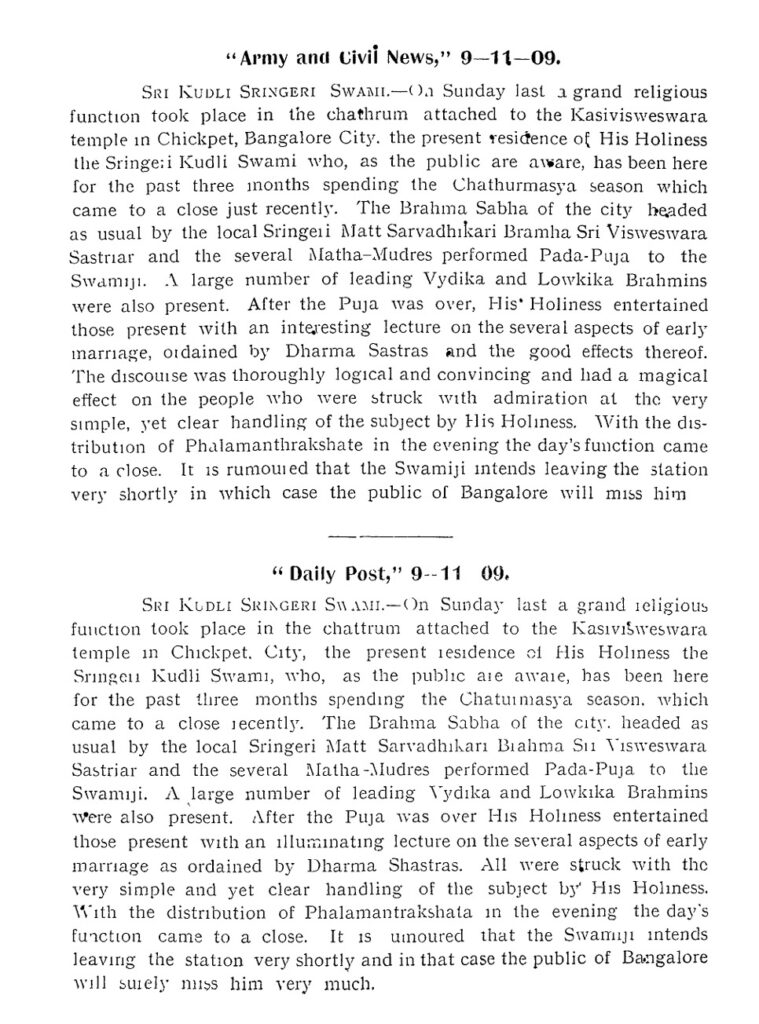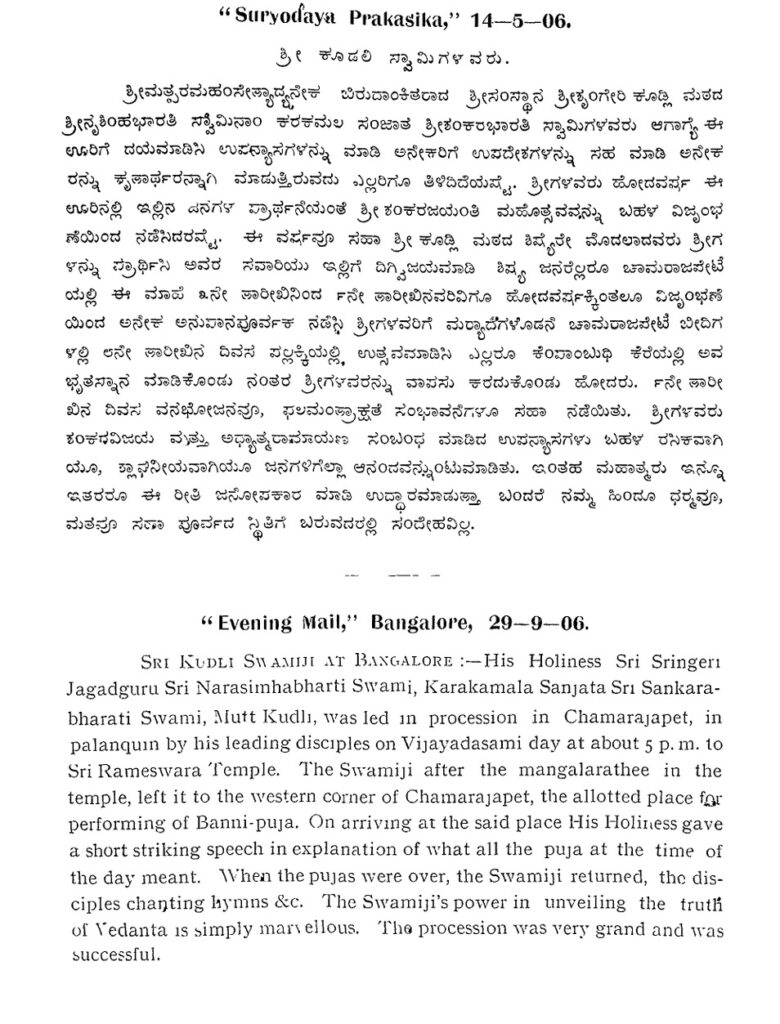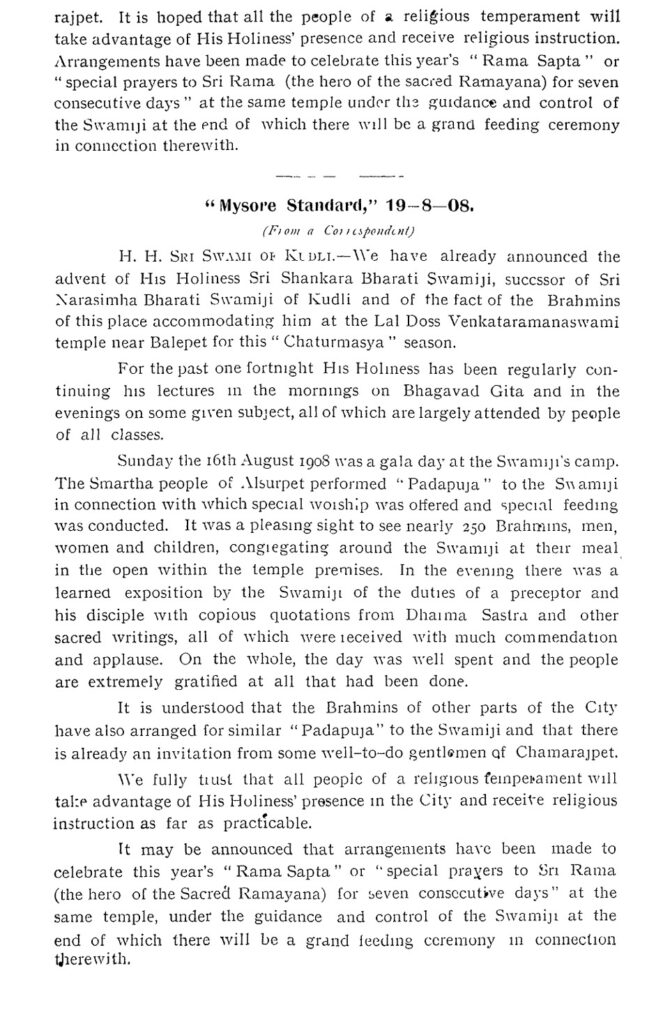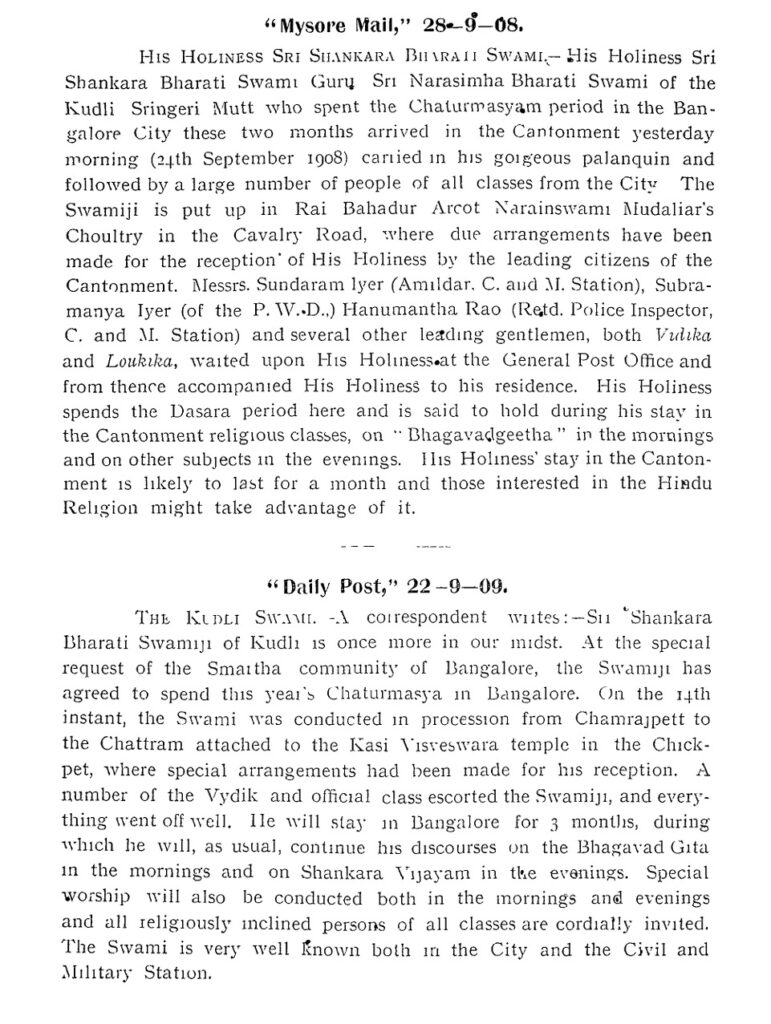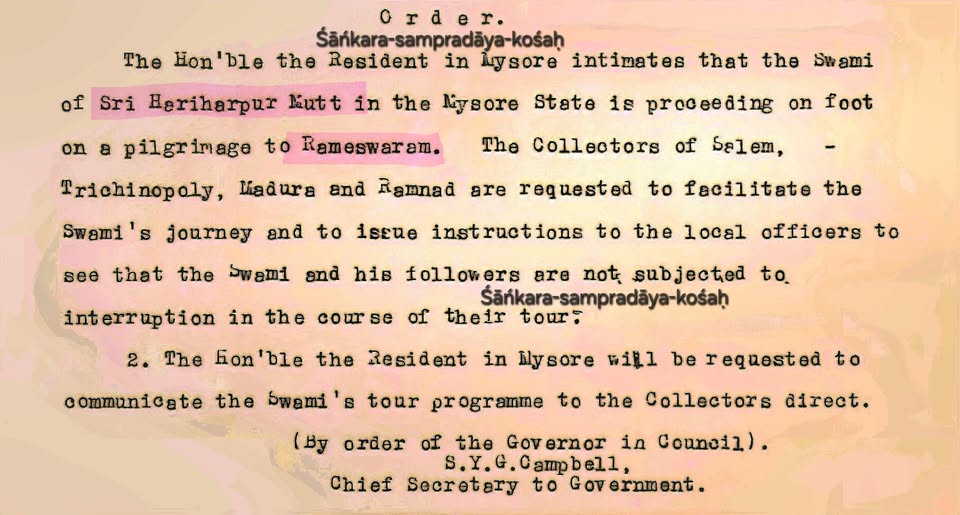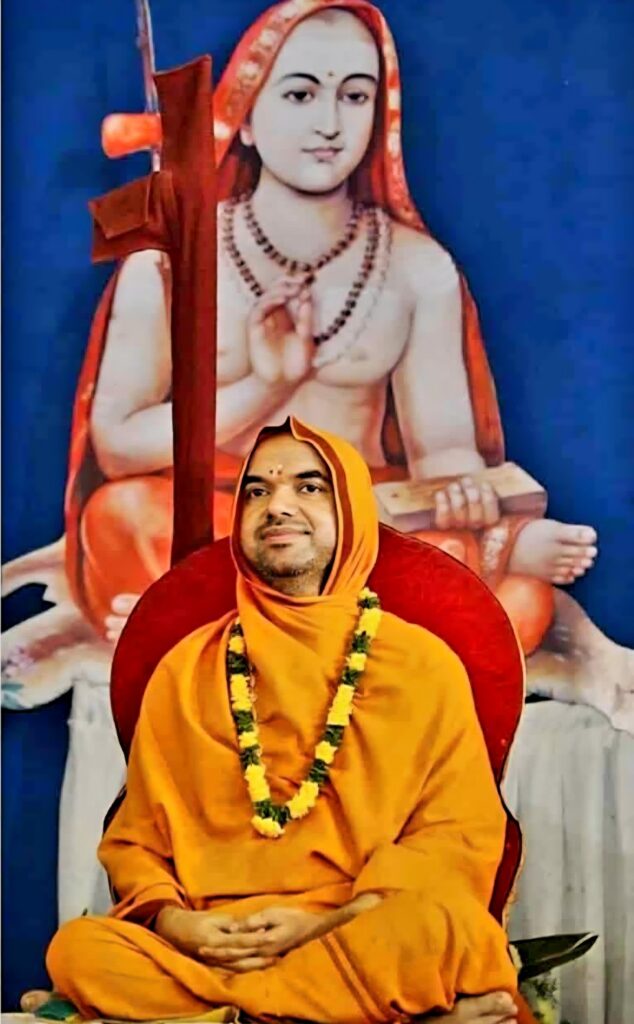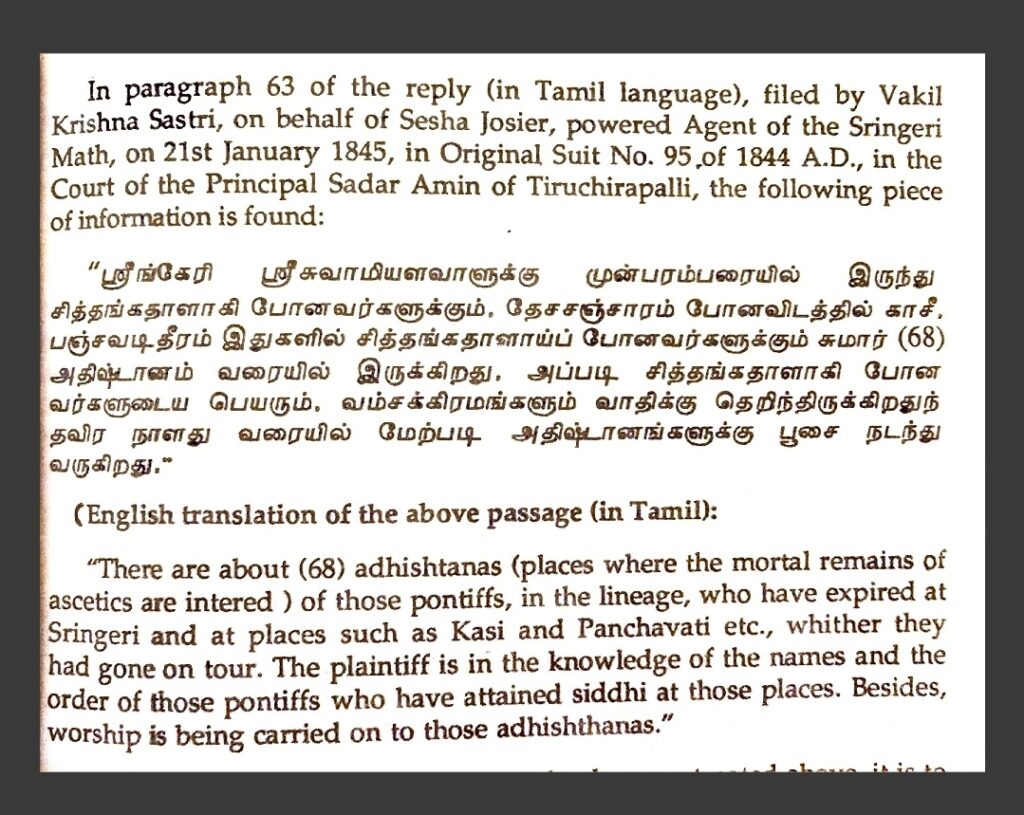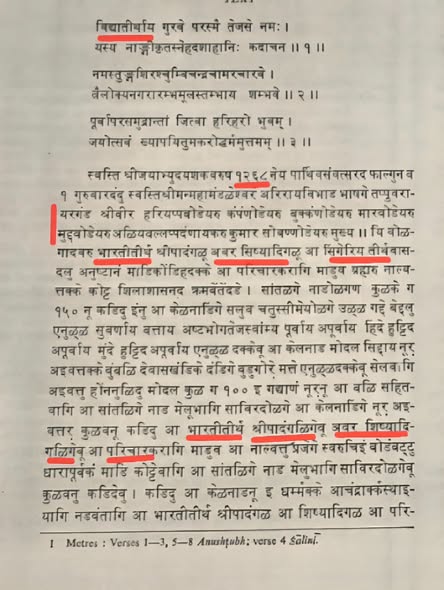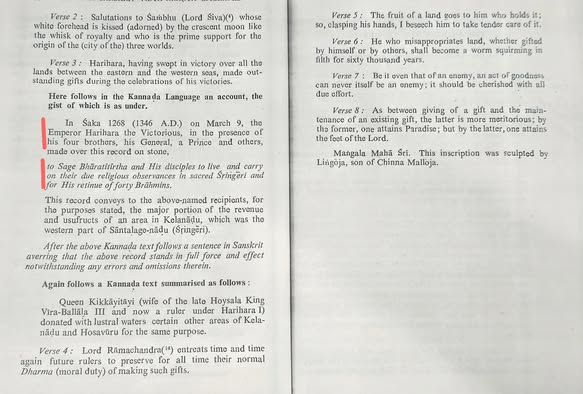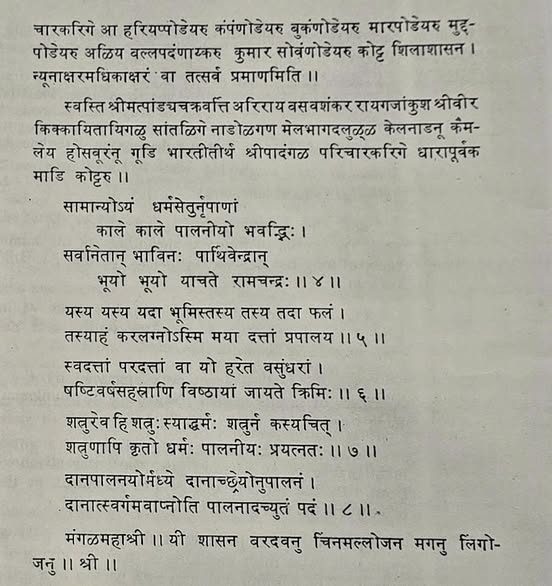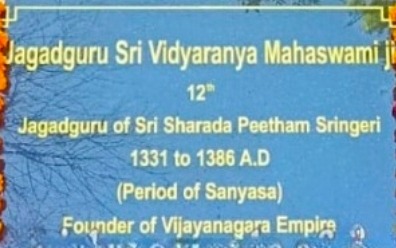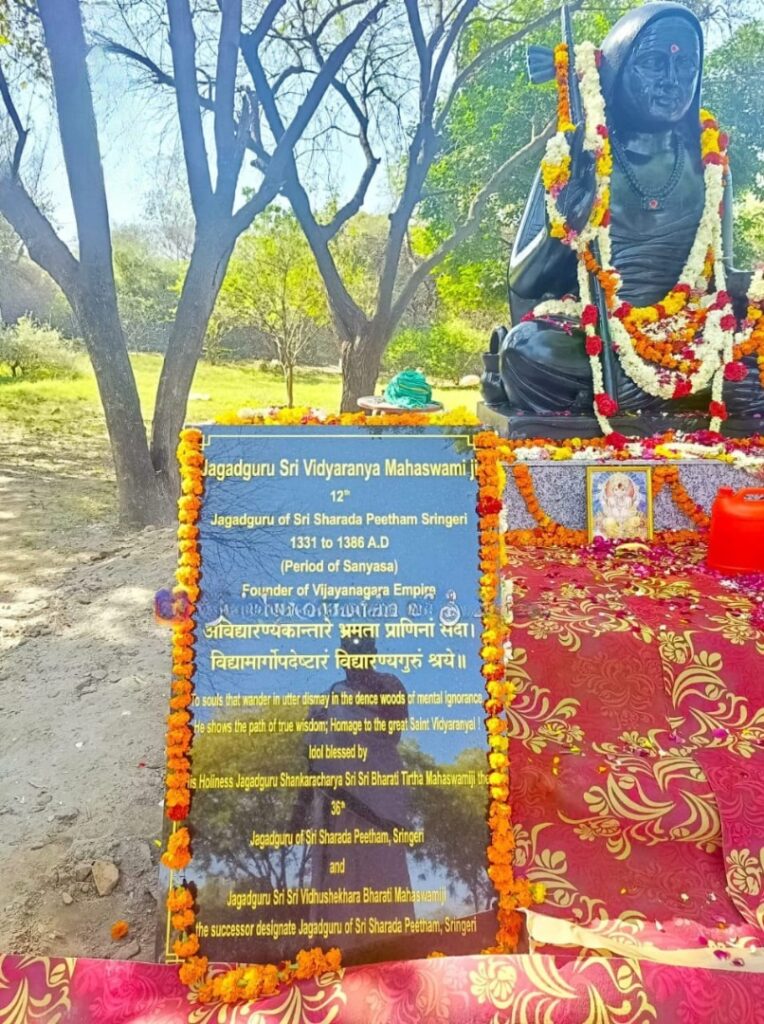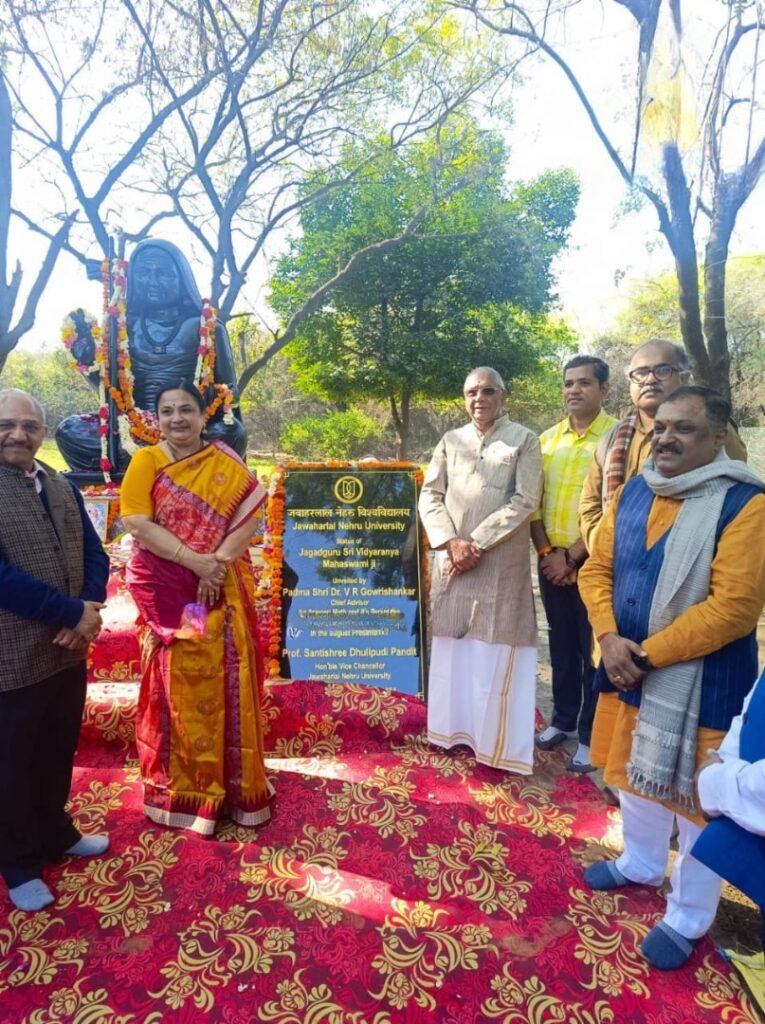The Mysore Government adopted a systematic approach to select a qualified successor to the Avani Peetham from its eligible disciples, strictly in line with the ancient traditions and customs of the Matha and in accordance with the Rules of the Muzrai Department governing succession.
Upon selection, the new Swamigalu was provided advanced religious education and training similar to the arrangements made for the young Swami of the Shivaganga Matha.
A committee of scholars and eminent persons periodically visited the Matha to observe his progress, and the Government further sought the guidance of Mahamahopadyaya Shri Virupaksha Shastri to assess and advise on his training.
This stands as a classic instance of the Maharaja of Mysore discharging his paramount duty to protect an ancient Matha and its parampara, without outsourcing the same to any other external denomination.

